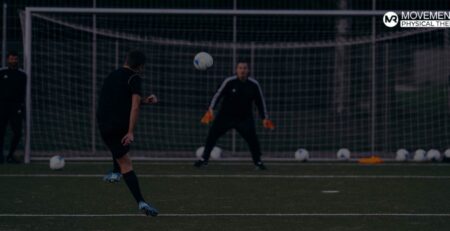How Sports Therapy Can Help with Shin Splint Pain
Shin splints, medically known as medial tibial stress syndrome, are a common issue among athletes, runners, and anyone engaging in repetitive, high-impact activities. This condition causes pain along the shinbone (tibia) and can significantly hinder physical performance. Whether you are a seasoned athlete or a casual runner, shin splints can derail your fitness goals and affect your overall mobility.
Fortunately, sports therapy offers a practical, holistic approach to treating and preventing shin splints. With targeted treatments, personalized training adjustments, and expert guidance from professionals like those at Redefined Therapy, you can address the root cause of the pain, recover faster, and improve your athletic performance.
What Are Shin Splints?
Shin splints typically occur when the muscles, tendons, and bone tissue around the tibia are overworked. This overuse can lead to inflammation, discomfort, and even microtears in the soft tissue. Common causes of shin splints include:
- Overtraining: Increasing the intensity or duration of workouts too quickly.
- Improper Footwear: Wearing unsupportive or worn-out shoes during exercise.
- Biomechanical Issues: Flat feet, improper gait, or uneven leg lengths.
- Surface Impact: Running or exercising on hard surfaces like concrete.
How Sports Therapy Helps Shin Splints
Sports therapy is a specialized approach to managing injuries related to physical activity. It combines manual therapy, exercise prescription, and education to promote recovery and prevent future injuries. Here’s how sports therapy—especially at Movement Redefined—can specifically address shin splints:
Accurate Diagnosis and Assessment
The first step in sports therapy is identifying the underlying cause of your shin splints. At Movement Redefined, the experts will evaluate:
- Your movement patterns and biomechanics.
- Training routines and activity levels.
- Foot posture and gait.
This comprehensive assessment ensures that your treatment plan targets the root cause of the issue rather than just alleviating symptoms.
Pain Relief and Inflammation Management
Sports therapists use a variety of techniques to relieve pain and reduce inflammation, including:
- Soft Tissue Massage: Helps release tension in the calf muscles and surrounding tissues, reducing pressure on the tibia.
- Cryotherapy: Application of ice packs to reduce swelling and alleviate discomfort.
- Kinesiology Taping: Provides support to the muscles and reduces strain during movement.
At Movement Redefined, these treatments are tailored to your condition, ensuring quick and effective relief.
Strengthening and Conditioning Exercises
A key component of sports therapy is rehabilitative exercise, which focuses on strengthening the muscles supporting your shinbone. Common exercises include:
- Calf Raises: Build strength in the calves to support better shock absorption.
- Toe Taps: Improve ankle stability and strengthen the muscles in the front of the lower leg.
- Eccentric Heel Drops: Stretch and strengthen the Achilles tendon and calf muscles.
The therapists at Movement Redefined create personalized exercise programs to speed up recovery and prevent recurring shin splints.
Gait Analysis and Correction
Biomechanical issues, such as overpronation (rolling the feet inward) or improper running technique, are common contributors to shin splints. Sports therapists at Movement Redefined perform a detailed gait analysis to pinpoint inefficiencies in your movement. Based on the results, they may recommend:
- Custom orthotics for better foot alignment.
- Adjustments to your running form to minimize impact.
Gradual Return-to-Activity Plans
Rushing back into training can worsen shin splints or lead to re-injury. Physical therapy at Movement Redefined includes creating a gradual return-to-activity plan tailored to your fitness level and goals. This plan ensures you build strength and endurance while avoiding overloading your shins too soon.
Education on Injury Prevention
The team at Movement Redefined goes beyond treatment by teaching you how to prevent shin splints in the future. You’ll learn about:
- The importance of proper warm-ups and cool-downs.
- Selecting the right footwear for your sport or activity.
- Structuring workouts to avoid overtraining.
When to Seek Sports Therapy
If you’re experiencing persistent shin pain that doesn’t improve with rest or self-care, it’s time to consult a sports therapist. Signs that you may need professional help include:
- Pain that worsens during or after physical activity.
- Tenderness or swelling along the shinbone.
- Difficulty performing daily activities due to discomfort.
Prevent Shin Splints with Movement Redefined
Even if you’ve recovered from shin splints, sports therapy can help you stay injury-free. To avoid future issues:
- Follow a Balanced Training Routine: Incorporate strength training and flexibility exercises into your workouts.
- Wear Proper Footwear: Replace your running shoes regularly and ensure they provide adequate support.
- Practice Good Technique: Work with the experts at Movement Redefined to refine your running form.
- Progress Gradually: Avoid abrupt increases in training intensity or volume.
Seek Expert Help at Movement Redefined
Shin splints can be a painful setback, but they don’t have to derail your fitness journey. With expert care from Movement Redefined, you’ll receive a comprehensive approach to treating and preventing shin splints, helping you recover faster and return to peak performance.
Whether you’re seeking pain relief, improved biomechanics, or long-term injury prevention, Movement Redefined guides you through every step.
Schedule Your Appointment Today and let their team of skilled professionals help you move better and feel stronger!


Leave a Reply